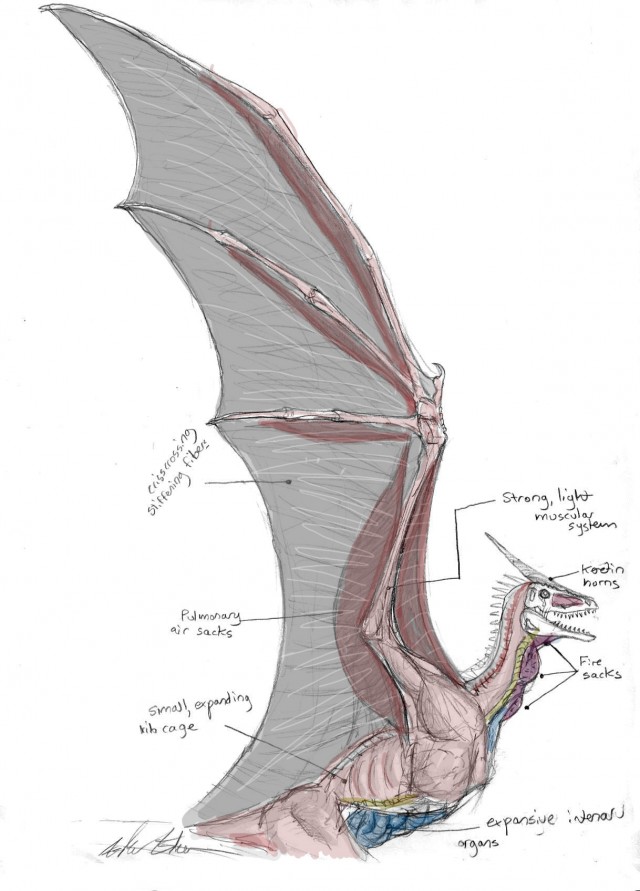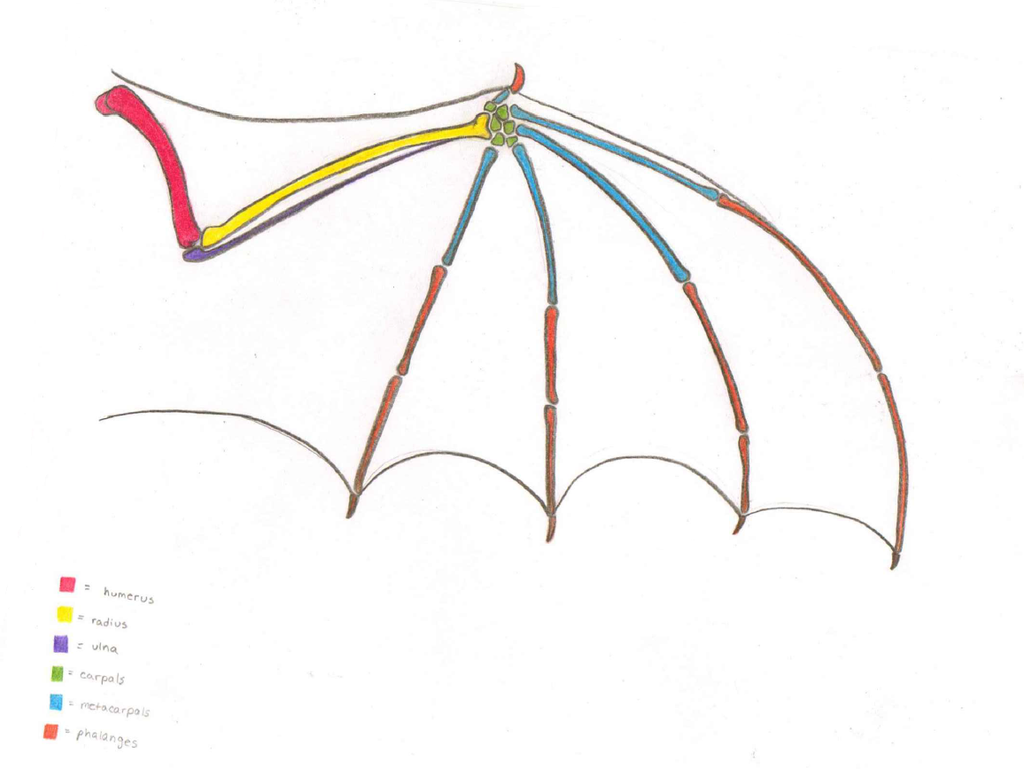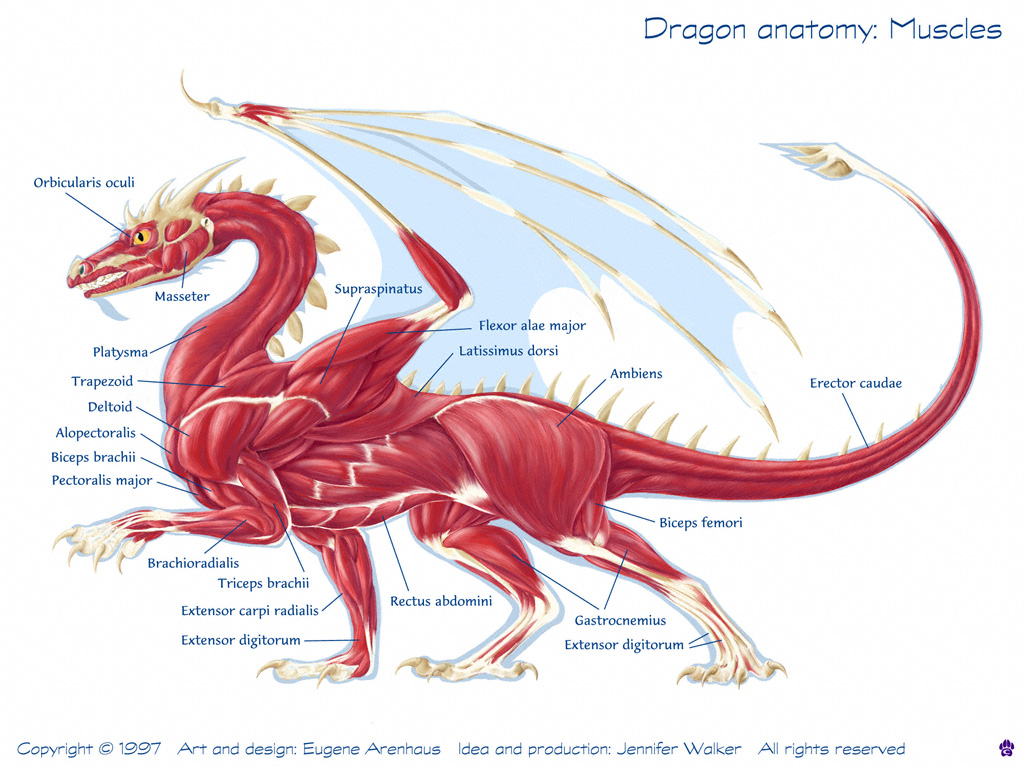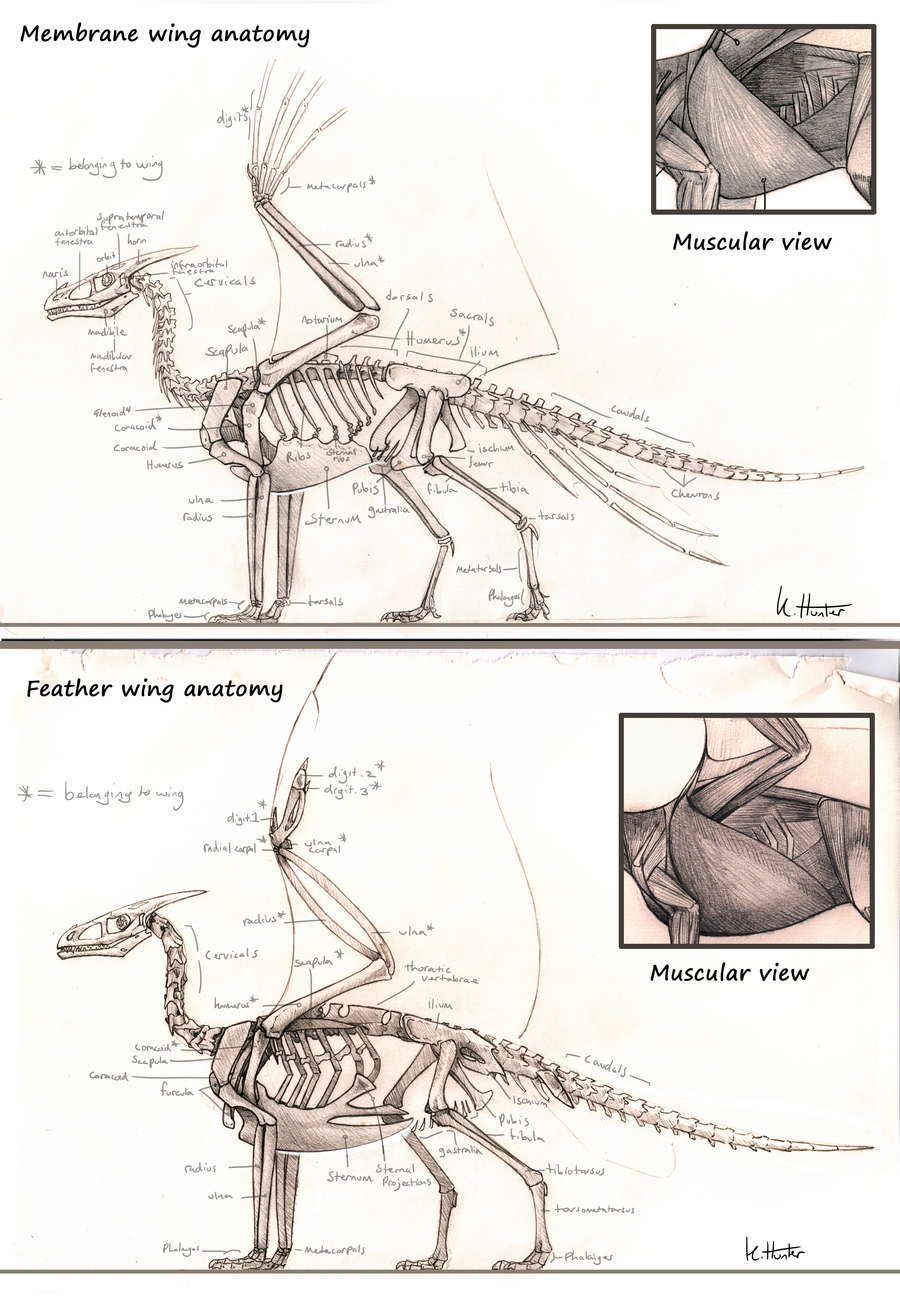
Winged Human Anatomy by Zethya Wings drawing, Drawings, Wing anatomy
Dragons have four legs and two wings. Dragons are covered in scales ranging from green to red to black. Dragon eyes are typically yellow or green. Dragon teeth are sharp and can be up to 12 inches long. Dragon claws are sharp and can be up to 6 inches long. Dragon tongues are forked and can be up to 18 inches long.

Browsing deviantART Dragon anatomy, Dragon wings, Dragon art
The dragon wing is a huge, leathery appendage that is found on several different species of dragon. The wing is usually larger than the dragon's body to accommodate the incredible force needed to lift and maintain flight. BONES The wing is essentially another arm and hand. If you look at the skeleton of a dragon front arm and claws, you will.

Ciencia de tronos V Dracarys Naukas
Common traits of Western Dragons include the following: Reptilian appearance. Wings and/or the Ability to Fly. Tremendous Strength and/or Powerful Muscles. Heavy Bodies, Terrible Jaws and Teeth. Noxious Breath and/or the ability to spew water, fire, or venom. Dangerous, even poisonous, blood.

Dragon anatomy Dragon anatomy muscles
Dragons are warm-blooded animals, also known as homeothermic, belonging to the reptile family. Their body temperature is regulated internally, with the ability to adapt to various climate conditions. They have unmistakable wings, hence the flying. Dragons don't depend on the sun's warmth, so they have no problems being active day or night.

Anatomy Of A Dragon Wing by AutumnisBeautiful on deviantART
Dragon anatomy is a problematic topic, mainly due to the fact that they're mythical creatures. However I can show you how to design a believable body for this mythical creature based on basic anatomy theory. In this tutorial you'll learn about dragon skeleton, muscles and movement.

Dragon Wing and Chest Anatomy by Wing Anatomy, Dragon Anatomy, Anatomy
1. Global anatomy of the dragon The skeletal structure of the dragon has a large head, long neck, broad shoulders, thick legs, a powerful tail and large wings. Unlike human bones, dragon bones are very strong, hollow and light. It's true that having hollow and light bones helps a dragon fly. The western dragon has very powerful muscles.

Dragon Wings by SammyTorres on DeviantArt Wings drawing, Creature concept art, Art reference
The wings of dragonflies are mainly composed of veins and membranes, a typical nanocomposite material. The veins and membranes have a complex design within the wing that give rise to whole-wing characteristics which result in dragonflies being supremely versatile, maneuverable fliers.

Dragon wing anatomy Atlas of Pern Wing Anatomy, Dragonriders Of Pern, Dragon Rider, Dragon
Snake anatomy, locomotion, and general size. Avian anatomy, covering a survey of bird adaptations and general size. Covering some specific species of interest. Drake anatomy covers the possible variations of this large, four-legged beast. Eastern dragon anatomy covers some possible physiologies for the mythical dragons of the East.

Dragon Anatomy Part Two by zelink14 on DeviantArt
Therefore, no limitation is placed on exploring other explanations of Eastern dragon anatomy, since the descriptive quality of the animals attributed here is a demonstration of power and strength, rather than a true biological description of the creature in question.. Flying without Wings. No known species can fly without wings; however,.

Dragon Wing Study/Tutorial by TIFFASHY on DeviantArt in 2023 Wings drawing, Wings sketch
A dragon's wings are a shield and a sword, allowing them to whip up violent gusts of wind or create impenetrable barriers to defend their territories. It is through these majestic wings that dragons assert their dominance and establish their authority, a sight both breathtaking and fearsome.

Fourwinged dragon anatomy study by Quentinvcastel on DeviantArt Dragon anatomy, Dragon
Flight in dragons (Draconia) is an ancestral trait, with even the earliest known dragons being fully capable of powered flight. While there is a good degree of morphological variation within the clade, all dragons show the same basic wing anatomy: - A robust, nearly solid humerus - Fused radius and ulna - Fused & elongated carpal (wrist) bones

Dragon Anatomy and Physiology discovered by Draconian.
Dutch Angel Dragons are a unique species of dragon that feature an anatomy very similar to the horses of Terra. Each dragon can be remarkably different from one another, but there are many traits (phenotypes) that are shared by all members of the species.

dragon Dragon anatomy, Dragon sketch, Dragon drawing
Skeletal structure consists of a large head, long neck, broad shoulders, thick legs, strong tail and very large wings. The bones are very strong, hollow, and light, allowing for flight. Western dragons have stronger, more powerful muscles. Their masseter muscle is in the jaw and can easily crush bones to bits.

"Dragon Anatomy 002" by RJ Palmer Redbubble
Wings are defineatly the trickiest part of dragon art, but the most fun, and can really spark your creativity! Here are a few structure drawings of wings that I put on my dragons Notice the way that the wings are curved and sharp, this is where you will add spikes of your chosing!

Feathered wing vs Membrane wing anatomy (Dragon) by Sezaii on DeviantArt
Dragons' abilities set them at the top of the food chain and make them the most potent hunters of the natural world. Contents 1 Dragon Traits 2 External Anatomy 2.1 Sense Organs 2.2 Jaws and Teeth 2.3 Spines, Claws, and Horns 2.4 Scales 2.5 Wings 3 Internal Anatomy 3.1 Major Organs 3.2 Muscular System 3.3 Skeletal System 4 Metabolism 4.1 Diet

Dragon anatomy wing study by Dragon Sketch, Dragon Drawing, Dragon Art
Dragon wings are unlike any other wings found in the animal kingdom. They are a marvel of evolution, combining the strength and agility of a bat's wing with the scale-covered membrane of a reptile. These wings are typically attached to the dragon's back, spanning a formidable width that is proportional to their body size.